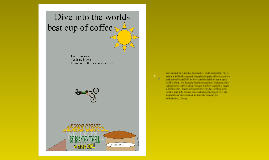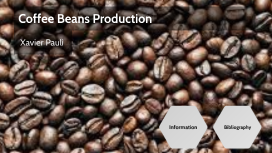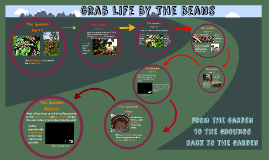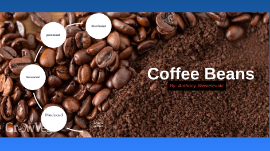Coffee Beans
Transcript: How have coffee beans affected society? Coffee has taken over the world, 40% of the worlds populations drinks coffee every single day. Thats one trillion four hundred sixty billion cups of coffee every year, and thats just calculating if only 1 cup of coffee was drunk daily most people drink more. Most adults rely on their cup of coffee every day and if they don't get it they find it hard to function. This pretty much ensures that the coffee industry is here to stay. Here is a map that shows the average coffee drunk daily in each country. even though this is 10 years old it shows the impact this drink has on society. This graph shows the diffent percentage of people in age demographics that buy pre-made coffee from starbucks for example. Coffee Beans By Mitchell History And Origin 2 Of the Coffee Bean Coffee beans are thought to have originated in Ethiopia. In the 15th century the beans started their journey traveling across the red sea to Yemen. Then Yemen started growing their own beans and by the 16th century coffee beans were known in Persia, Egypt, Syria, and Turkey. Here is a map of were coffee spread around the world. How long do coffee beans last and do many go to waste because of this? an unopened bag of coffee beans will last up to twelve months, whereas an opened book will usually last about one week. Every year around 6 million tonnes of "spent" coffee make its way into landfill every year. That's enough to fill up the Pyramids of Giza. Here is a graph showing the countries that crontribute the highest amunt of "spent" coffee beans Economic impacts Of the coffee bean. Largest Coffee Bean producing countries Coffee farming is a major factor in some local economies around the world, from the farming to the retailing they all pay a major role in the economies as they are important sources of revenue for many countries. The coffee market made $83.3 billion US in 2023 and is expected to grow by 4.61% annually. As coffee is the second most exported item after petrol. This graph shows how much money (US) it costs per kilogram of coffee beans for it to go through it's life cycle. Coffee beans come from two types of plants, Arabica, and Robusta. These plants typically grow in the area known as the ‘Bean Belt’ which is a band around where the equator is, and it spans from the top of India to the bottom off Brazil. All the highest producing coffee beans countries are in this area and they are mostly poor countries where they can sell mass amounts of coffee beans for cheaper amounts. Enviromental Impacts. There are many different factors to consider when looking at the environmental impacts with coffee beans. There are the trucks, boats and farming to consider and how the waste is treated. Looking at the farming there are many companies that are now being a lot more conscious with the effects that their farms have. Some of the major environmental issues with unsustainable farming with coffee beans are that they are altering rainforest ecosystems which has negatives impacts on both animals and plants. Unsafe coffee bean farming practices are also leading to water pollution, deforestation and soil erosion. Here is a graph that shows the different affects with coffee beans, not just with the commercialalization but with processing and cultivation. Supply routes Of coffee beans Can Coffee Beans 1 Coffee beans are typically farmed in the "bean belt" as shown before, and are distrubeted to buyers in different countries all around the world. The beans start their journey in on a truck to a factory where they are processed and sent to buyers across the world. In the map shown this is where America gets its coffee beans from. cause health problems? Anything in excess can cause health problems and this is the same with coffee beans. In excess they can, increase cholesterol levels, cause heartburn and even cause nervousness and insomnia. Contrary to belief coffee does not stunt growth but you should still drink it in moderation and it is best to have 100mg or less if you are under 18. Main companies that sell coffee beans and are they responsible in their waste disposal? To start off with Starbucks is the largest coffee company with an annual revenue of 32.3 billion. Starbucks uses more than 8,000 paper cups a minute which ends up being more than 4 billion a year, which leads to 1.6 million trees being harvested and since the cups are lined with plastic, they aren’t really recyclable. Ethical Farming Practices It is important for coffee beans to be grown ethically, many workers get paid about $900 a year and woman who work in the wearhouses get paid just about $20 a month. Although many workers only get paid around $20 a month, thats a lot better than many. many are held as slaves and the majority of the slaves are in brazil. This poster shows the amount of paper cups used in America every year. If laws came into place making it a law to have recycible or sustanible cups we would save 6.4 million trees a year. Here is

















